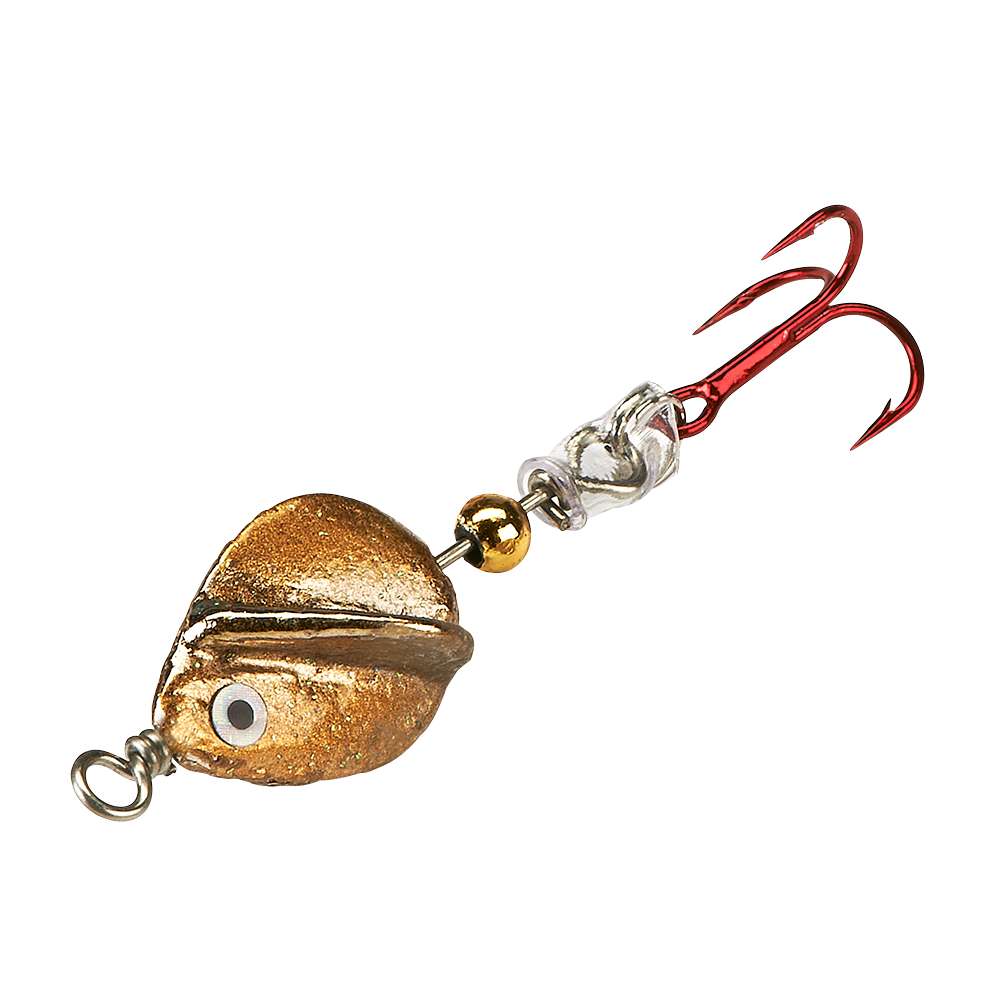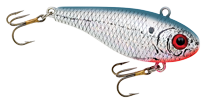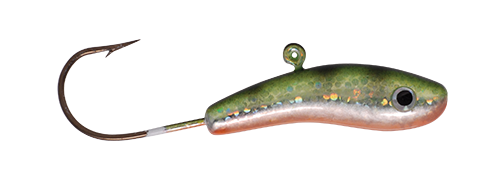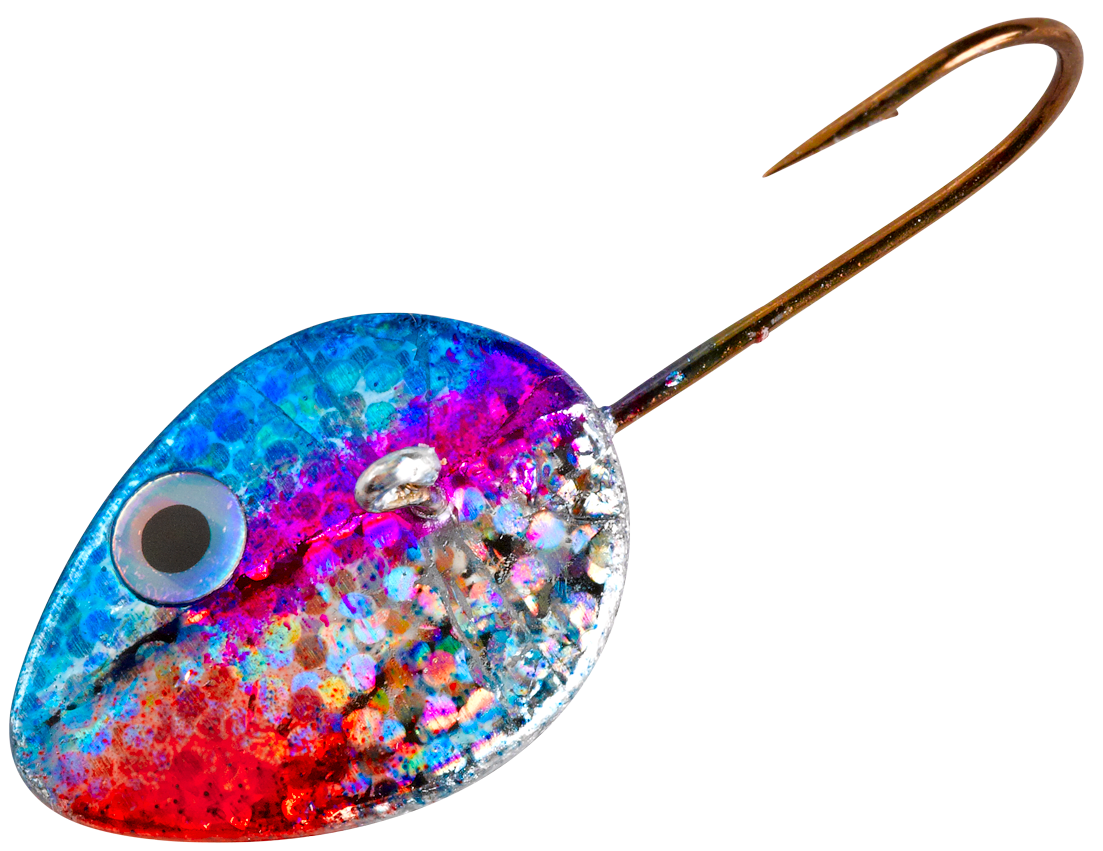 What if you could only take 10 lures to the ice to catch walleyes? What would they be? With so many variables in water color, depth, fish mood, light penetration and more, plus so many styles, colors and sizes of ice baits to select from, it seems like you could carry a bucketful of baits onto the ice and still end up needing something you don’t have.
What if you could only take 10 lures to the ice to catch walleyes? What would they be? With so many variables in water color, depth, fish mood, light penetration and more, plus so many styles, colors and sizes of ice baits to select from, it seems like you could carry a bucketful of baits onto the ice and still end up needing something you don’t have.

We asked ice fishing expert Jon Thelen what he would have in his box if he could only pick 10 lures for catching walleyes through the ice, even having him narrow each pick to a single color and size. As importantly, we asked why each item made the list and how it would fit in his ice strategies.
Lindy Tazer
OK, item No. 1 isn’t really a lure, but Thelen considers the Lindy Tazer so essential that it needs to be on the list. Glow colors can make a major difference in stained or extra deep water, or under heavy snow cover; however, even the best glow color does minimal good if you don’t keep it charged. Thelen always keeps a Tazer handy, and he gives his glow color baits a quick blast of light fairly frequently.
¼-Ounce 360 Jig, Silver/Gold
If you haven’t seen a 360 Jig yet, you probably haven’t seen anything like it. The body spins, squeaks and bangs against a bead to attract fish, with color patterns that suggest both primary and secondary colors of baitfish. Thelen likes a ¼-oucne Silver/Gold version, which is highly natural and relatively small, for clear water and shallow, early season fish. The 360 Jig spins and displaces water on the way up and then flutters down like a spoon. Thelen tips the treble hook with a minnow head or larvae.
3/8-Ounce 360 Jig, Fire Tiger
Thelen uses this bigger, brighter 360 Jig in different circumstances than the smaller version. Walleyes move deeper as winter progresses, and thicker ice with added snow cover combine to cut down visibility. In this instance Thelen wants to displace more water and offer a bigger, bolder profile. He also snaps the rod a little more aggressively to rattle the body and the bead to attract fish, and usually tips the hook with a minnow head.
 Lindy Darter, 1 ¾-inch, Shad
Lindy Darter, 1 ¾-inch, Shad
This specific Lindy Darter serves Thelen well all season long and in a wide range of conditions because the loud rattles and wide sweeping action help him call fish to the hole; however, it’s not just attraction he’s after. The Shad color pattern is extremely natural and walleyes gobble it up. He uses the same lifts and drops to put a Darter into motion in any water depth, making it very versitile. Beyond actually catching big numbers of fish, the Darter is a great tool for drawing fish close enough to find a dead-sticked bait in an adjacent hole.
Rattl’N Flyer Spoon, 3/16-ounce, Red
“When I’m walleye fishing, I always have one tied on,” Thelen said about a Red 3/16-ounce Rattl’N Flyer Spoon. The combination of the red front the glowing back simply works, especially in water that’s somewhat dark, and he likes this spoon because he can work it aggressively and make a lot of noise, or keep it quiet with controlled lifts and drops.
Rattl’N Flyer Spoon, 1/8-ounce, Silver Shiner
Smaller and very natural looking, this Rattl’N Flyer Spoon comes into play when bluebird skies or other conditions have the fish extra fussy, but Thelen’s wants to offer the same rattling and fluttering action he gets out of the larger sized Rattl’n Flyer. He also likes this particular spoon early in the ice season if the walleyes are in less than about 10 feet of water. Depending on how he works it, he can make it mimic a lazy swimming minnow or a frantic dying baitfish.
Frostee Spoon, 3/16-ounce, Golden Shiner
 Sometimes fish want the flash of the spoon without the added sound of the rattles. That’s when Thelen goes to a Frostee Spoon. He knows it’s Frostee Spoon time when he keeps seeing fish coming in and then turning away without biting. He likes Gold Shiner because it’s a natural color and suggests a real baitfish, but kicks out a lot of flash with its holographic finish.
Sometimes fish want the flash of the spoon without the added sound of the rattles. That’s when Thelen goes to a Frostee Spoon. He knows it’s Frostee Spoon time when he keeps seeing fish coming in and then turning away without biting. He likes Gold Shiner because it’s a natural color and suggests a real baitfish, but kicks out a lot of flash with its holographic finish.
Slick Jig, 3/8-ounce, Perch
 A Slick Jig serves double duty for Thelen. For starters, he considers it the best pounding jig on the market and uses it whenever he wants to kick up bottom sediment to draw the attention of feeding fish. For pounding, he slides the knot to the back of the eye and cinches it tight, so the jig falls nose-first. He also likes jigging a Slick Jig off the bottom because with the knot straight up, and with the right kind of lift, he can make the bait dance and swim well outside the hole and cover a wide area. In that situation, he commonly tips it with a whole minnow.
A Slick Jig serves double duty for Thelen. For starters, he considers it the best pounding jig on the market and uses it whenever he wants to kick up bottom sediment to draw the attention of feeding fish. For pounding, he slides the knot to the back of the eye and cinches it tight, so the jig falls nose-first. He also likes jigging a Slick Jig off the bottom because with the knot straight up, and with the right kind of lift, he can make the bait dance and swim well outside the hole and cover a wide area. In that situation, he commonly tips it with a whole minnow.
Foo Flyer, 3/16-ounce, Rainbow
 Like a Slick Jig, a Foo Flyer darts sideways when it’s worked and covers a broader area than the diameter of the hole. It’s much more subtle than a Slick Jig, though, and glides to the side when it falls back through the water column. Thelen likes the generally natural look and the hints of pink and blue in the Rainbow color pattern. He normally works a Foo Flyer so that it stays barely off the bottom and looks like it’s scrounging for forage.
Like a Slick Jig, a Foo Flyer darts sideways when it’s worked and covers a broader area than the diameter of the hole. It’s much more subtle than a Slick Jig, though, and glides to the side when it falls back through the water column. Thelen likes the generally natural look and the hints of pink and blue in the Rainbow color pattern. He normally works a Foo Flyer so that it stays barely off the bottom and looks like it’s scrounging for forage.
Lindy Frostee Jig, No. 6, Chartreuse Green Glow
 Sometimes the fish don’t want added sound, flash or action. They want a live minnow. For that reason, Thelen often complements the rod in hand with a deadstick rod in an adjacent hole. He rigs that rod with a No. 6 Frostee Jig baited with a live minnow hooked beneath the dorsal fin, and then adds a float to suspend the Frostee and minnow just off the bottom. The green glow head and brass hook add just a hint of color as the minnow races around beneath the float.
Sometimes the fish don’t want added sound, flash or action. They want a live minnow. For that reason, Thelen often complements the rod in hand with a deadstick rod in an adjacent hole. He rigs that rod with a No. 6 Frostee Jig baited with a live minnow hooked beneath the dorsal fin, and then adds a float to suspend the Frostee and minnow just off the bottom. The green glow head and brass hook add just a hint of color as the minnow races around beneath the float.
